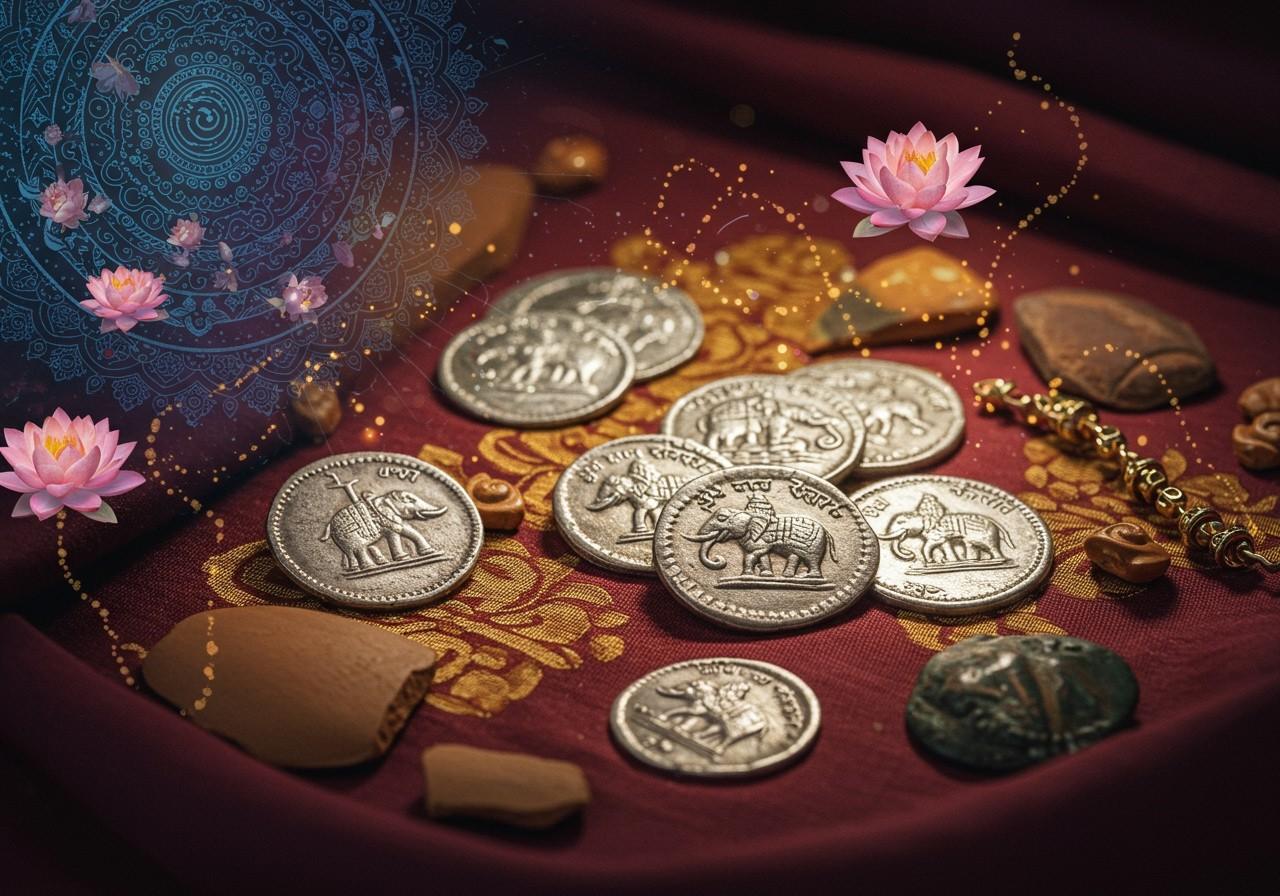
The Satavahana dynasty, a prominent power in ancient India, reigned over the Deccan region from approximately the 1st century BCE to the 3rd century CE. Their coinage holds immense significance in understanding the economic and cultural landscape of the era. This article delves into the history and importance of Satavahana coins, examining their distinctive features, the metals employed, and their influence on trade and governance.
Historical Overview
The Satavahana empire extended across present-day Maharashtra, Madhya Pradesh, Karnataka, Andhra Pradesh, and Telangana. Their reign witnessed extensive trade routes and cultural interactions with other civilizations. Key figures like Gautamiputra Satakarni and Hala played pivotal roles in shaping the empire. The Satavahanas actively promoted Buddhism and patronized art and architecture, reflecting their cultural values.
Design and Symbolism
Satavahana coins frequently depicted motifs such as elephants, lions, and horses, symbolizing strength and royal authority. Floral patterns and religious symbols, including Buddhist stupas and deities, were also common, showcasing the dynasty’s religious inclinations. Inscriptions in Prakrit provided insights into rulers’ names, titles, and religious affiliations. These designs collectively reflect the artistic and cultural ethos of the time.
Metals Utilized in Coinage
Satavahana coins were struck from a variety of metals, including gold, silver, copper, and lead. Each metal served different purposes and held varying significance. The selection of metal often depended on its availability, economic value, and symbolic meaning. For instance, gold coins were rare and reserved for high-value transactions, while lead coins were more common for everyday use.
Gold Coinage
Gold coins of the Satavahanas, minted between the 1st century BCE and the 2nd century CE, were primarily used for large-scale trade and ceremonial purposes. These coins often featured intricate designs, including portraits of rulers and inscriptions in Brahmi script, demonstrating the dynasty’s power and influence. They played a crucial role in facilitating international trade with empires like the Roman Empire, indicating economic prosperity and political stability.
Lead Coinage
Lead coins served a practical purpose for everyday transactions due to their lower value compared to gold and silver. Their simpler motifs and inscriptions made them suitable for regional markets and local trade. Lead coins offer valuable information about the economic activities of the common people, providing glimpses into local governance and trade practices.
Significance and Influence
The Satavahana coinage reflects the dynasty’s economic policies and trade practices. The coins served as a symbol of political authority, bearing the ruler’s image and inscriptions, and facilitated both regional and international trade, influencing neighboring cultures. The legacy of Satavahana coinage shaped the numismatic traditions of later Indian dynasties and continues to be studied by historians and collectors today.
How Poojn Can Enhance Your Connection to Ancient Heritage
At Poojn.in, we offer authentic items that resonate with the rich cultural heritage of ancient India, particularly the Satavahana era, known for its unique coinage from the 1st century BCE to the 2nd century CE. Our collection includes:
- 12″ Astadhatu Brass Lakshmi Mata Murti: This beautifully crafted murti showcases the goddess Lakshmi with cascading coins, reminiscent of the prosperity depicted on ancient Satavahana coins. It serves as a powerful symbol of abundance and good fortune.
- Lakshmi Yantra: Created with precise measurements according to traditional guidelines, this sacred geometric pattern is believed to attract wealth and prosperity, aligning with the economic significance of Satavahana coinage.
- Ritual Coins (Akshat): Used in various puja ceremonies, these coins uphold the ancient tradition of coin offerings during worship, connecting modern practices to historical rituals.
These items are ideal for:
- Home temples and personal altars
- Meditation spaces for enhanced focus and spiritual connection
- Puja rooms for traditional ceremonies and offerings
- Special ceremonies and festivals to honor deities and seek blessings
Visit Poojn.in to explore our diverse collection of authentic ritual items that bridge the gap between ancient traditions and modern spiritual practices. Each product comes with detailed care instructions and information about its spiritual significance.
Note: All items are carefully selected and quality-checked to ensure authenticity and adherence to traditional specifications.
Further Exploration
Delve deeper into the fascinating world of ancient Indian temples and deities with these insightful articles:
- Leaning Temple of Huma: History, Architecture, and Mystery
- Odisha’s Sacred Sites: A Journey Through Spirituality and History
- Upper Bagh Devi Temple: Exploring the Divine Feminine and Goddess Significance
Enhance your understanding of puja rituals and traditions with these relevant product offerings:
Conclusion
Satavahana coins are more than just currency; they are tangible artifacts that offer a glimpse into the rich cultural, economic, and religious tapestry of ancient India. From the intricate designs to the variety of metals used, each coin tells a story of the past, providing valuable insights into the political, social, and economic dynamics of the Satavahana dynasty. By studying these numismatic treasures, we connect with a heritage that has shaped our present, appreciating the enduring legacy of Indian traditions and craftsmanship.


